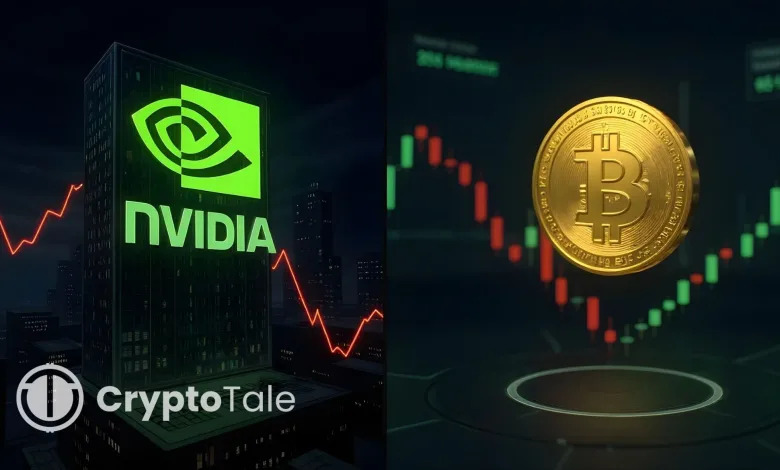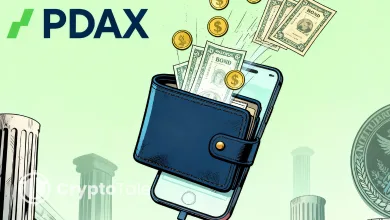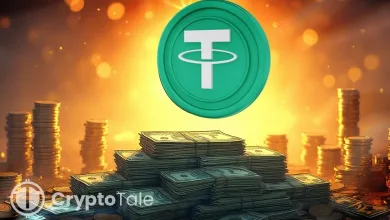Nvidia Shares Slip Post-Earnings, Bitcoin Mirrors Pause

- Nvidia’s earnings beat expectations, but shares dipped on export risks and revenue concerns.
- Bitcoin mirrored tech sentiment, holding near key support at $110K–$112K after Nvidia’s dip.
- The Nvidia-Bitcoin link faces strain as tech sell-offs spark doubts on the supercycle.
Nvidia’s latest earnings release revealed another strong quarter, but the market reaction told a different story. Shares of the world’s most valuable company slipped after the report, sending ripples through technology stocks and the cryptocurrency market. Bitcoin mirrored the pause, holding steady near crucial support levels as investors assessed whether the tech-crypto link was showing signs of strain.
Nvidia Earnings Beat, Shares Edge Lower
Nvidia reported revenue of $46.7 billion for the second quarter, a 56% increase from a year earlier. Net income rose sharply to $26.4 billion, while adjusted earnings of $1.05 per share topped expectations. Demand for its advanced processors remained strong, particularly in the data center segment, which delivered $41.1 billion in sales.
Yet, shares dipped in extended trading, falling 1.7% before widening losses to 3.4%. The investors raised concerns regarding the export restriction after Nvidia revealed that it did not export any H20 chips to China. This highlighted geopolitical threats, which are one of the challenges facing the company in its leadership of the AI hardware market.
The slight miss on data center expectations also weighed on sentiment. Analysts had forecast $41.29 billion in revenue from that division, but Nvidia delivered slightly less. Despite strong growth in Blackwell chip shipments, investors reacted cautiously.
Bitcoin’s Moves Mirror Tech Sentiment
Bitcoin and other major cryptocurrencies initially dipped after Nvidia’s results but quickly recovered. The leading cryptocurrency held steady around $113,300, hovering just above the $110K–$112K support zone, closely monitored by traders.
Recent trading patterns suggest a stronger link between Nvidia’s quarterly earnings and Bitcoin’s price action. Data from market analysts shows Bitcoin rallied in 7 of 10 quarters after Nvidia reported earnings. However, in each of those cycles, Bitcoin sold off sharply in the days leading up to the announcements.
The trend repeated in August. Bitcoin slid from above $116,000 to around $111,736 in the five days before Nvidia’s latest report. A similar pattern unfolded earlier this year. In February, Bitcoin fell nearly 12% before the earnings release. In May, it dropped over 5% in the same timeframe.
This recurring behavior has raised questions about whether investor sentiment around AI stocks influences Bitcoin. Both markets have ridden a wave of enthusiasm since early 2023, when Nvidia’s results coincided with the start of the current Bitcoin bull cycle.
At present levels, Bitcoin appears to be at a crossroads. A firm bounce from support could renew bullish momentum toward $116,000. However, if the support zone breaks, analysts warn of a slide toward $105,000.
Related: How Bitcoin Miners Are Reshaping the Future of AI Infrastructure?
The Tech-Crypto Supercycle Faces Resistance
The link between Nvidia and Bitcoin has fueled debate about a “tech-crypto supercycle.” Nvidia’s dominance in AI made it a key driver of broader market sentiment. Each of its earnings beats seemed to reinforce optimism across risk assets, including cryptocurrencies.
However, with Nvidia shares under pressure despite record results, some investors are now questioning whether that cycle is showing cracks. Export restrictions, cooling enthusiasm in technology stocks, and stretched valuations could limit the tailwind for cryptocurrencies.
For Bitcoin, the relation is both psychological and market-oriented. Traders often see Nvidia’s performance as a proxy for the broader innovation trade. When confidence in tech wavers, crypto sentiment tends to follow.
The current pause reflects that dynamic. A sharp decline in Nvidia shares, accompanied by a stalled rally of Bitcoin, indicates that investors are reevaluating risk tolerance. How the two markets react in the coming weeks will determine whether this is a short-lived consolidation or a turning point.





